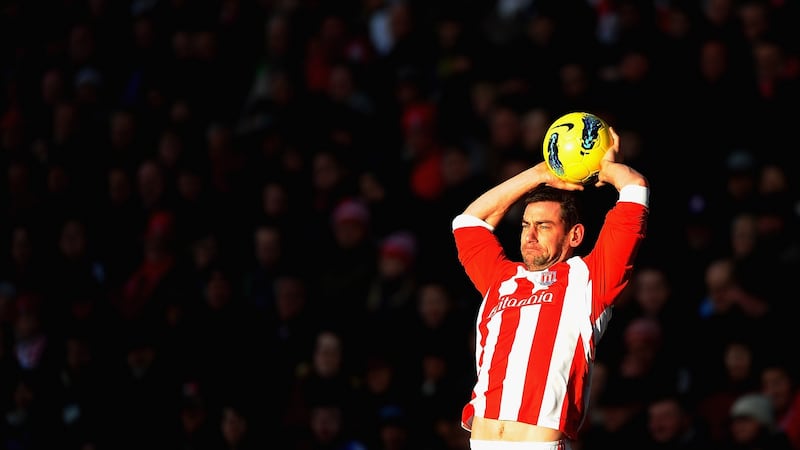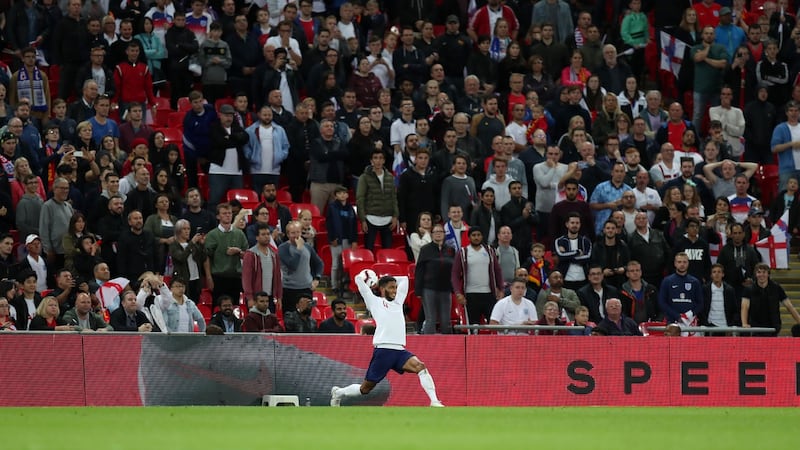Over the years, Thomas Gronnemark has encountered pretty much every conceivable reaction to his work. He has known some players who have laughed at the idea. He has found others who think his job is “weird.” He has met many, too, who are willing to listen, happy to explore any possible route to improvement. Only very occasionally, though, has he run into someone who has met someone like him before.
Gronnemark is, to the best of his knowledge, the only specialist throw-in coach working in professional soccer. For the last 12 years, he has trained top-level teams in his native Denmark, Germany and, as of this year, England, running sessions for players who have spent their lives honing and fine-tuning every aspect of their craft. Every aspect, that is, apart from throw-ins.
In “99 percent of cases,” Gronnemark said, not only have professional soccer players never practiced throw-ins, it has never even occurred to them that they might. “Most of the time, players do not know anything about throw-ins,” he said. “Coaches tell them just to ‘give it everything.’” Even those renowned as experts – more for power than precision – tend not to know what makes them special.
A moment of light entertainment at the end of the game as Milad Mohammadi thought twice about one of those sling-shot style throw-ins.
— RTÉ Soccer (@RTEsoccer) June 20, 2018
"It just didn't work out," laughs @WhelanRonnie5 #RTEsoccer pic.twitter.com/p9GtakLxnb
“They tell me it’s because they threw javelins at school,” he said. “Or they’ll say that their father took them, so they do, too.” The vast majority of players, managers and even fans subscribe to the line that Gronnemark hears all the time: It’s only a throw-in.
That is not how he sees it. Gronnemark, 42, is something of a sporting Renaissance man: He has competed for Denmark in track and field – generally as a sprinter – and has been part of the national bobsled squad. His real passion, though, has always been throw-ins. He holds the world record for the longest throw – 56 yards – and, in 2006, he set out to design a course to help improve players’ technique, focusing not just on distance, but on what he calls “fast” and “clever” throws, too.

He started work with Viborg, his local team in Denmark, before word of his impact spread to FC Midtjylland – Danish champions in 2015 and 2018 – and on to Schalke in Germany. Earlier this year, Jurgen Klopp read about Gronnemark’s work and invited him to hold a session at the club. The whole squad was involved; it was well received. Gronnemark signed a contract to work with Liverpool a few months ago.
Late in August, though, Gronnemark found himself the subject of intense, unexpected scrutiny. Though he refuses to discuss his work with Liverpool – he is bound by a nondisclosure agreement – news of the arrangement had leaked. Interview requests flooded in; most major outlets in Britain, and further afield, wanted to know exactly what it is that a throw-in coach might do.
Most of the coverage was curious, receptive. Gary Lineker pointed out that improving “the little things” could “make all the difference to a season.” Not everyone was so open-minded, however. Andy Gray, now a pundit on the Qatari network beIN Sports, lampooned the idea, suggesting Gronnemark’s advice would extend no further than “throw it to one of your own players.” And yet, though Gronnemark’s role may be unique, he is far from alone. That he has been able to build a career in such a niche area is representative of a broader trend within soccer. More and more, clubs and players alike are turning to external experts and independent consultants – specialists of all stripes – to improve any and all aspects of performance, no matter how marginal the gain might appear to be. Throw-ins are just the start of it.
“The increase in the amount of money in the game has led to a different sort of consciousness among owners,” said Hans Leitert, a former professional goalkeeper and goalkeeping coach who now works as a consultant to clubs and federations. Increasingly, he said, those owners want access to the best and brightest minds available. Away from the field, clubs have long worked with everyone from marketing strategists to medical experts; that attitude is now being applied to all matters on it.
No longer happy to trust in the judgment of an all-powerful manager, they are more likely than ever to challenge orthodoxies or to invest in research to ensure their team is a bastion of best practices. Soccer has advanced at a searing pace in the last 20 years, growing ever more interested in science, data and knowledge.
The picture Leitert paints is of a sport determined to extend its horizons, an industry that realises that the more it learns, the more it has left to discover. “It is a different world,” he said, compared with the era, not quite two decades ago, in which he played. “Clubs used to have a masseur; now they have a whole team of physiotherapists. They have highly educated scientists and analysts. They have become more sophisticated at hiring experts to get an edge.”
That thirst for improvement has touched everything. Many teams now outsource some of their recruitment work, consulting various outside analysts when assessing possible signings or transfer-market strategy. The advantage of such an approach, Leitert said, is that owners and chief executives find it is a more reliable way to get an honest answer.
“Independence is very powerful,” he said. “I am not dependent on results, so I can take a longer-term view, and I am not dependent on one manager, so I can say what I think. I might lose a client if I say the wrong thing, but I do not lose my job.”
He argues that he can work better, safe in the knowledge that a run of defeats will not get him fired; those clubs he works with, including Liverpool, treasure that his opinion is “unbiased and informed.”
The big picture is only part of it, however. The fine details are now being turned over to specialists, too. Ten years ago, Gianni Vio was a banker in Venice who spent his free time dreaming up set-piece routines, and publishing the best on his blog. Since then, he has worked for a host of teams – including AC Milan and Fiorentina – putting them into action.
All teams spend time during the week working on their routines, both defensive and offensive, but what matters, Vio said, is not “how much you work on them, but how well.” For that, you need a specialist: someone, like Vio, who coaches nothing but set pieces.
His main task, he said, is “changing habits.” Most players, he said, are used to running into the box and “doing battle” for the ball. Just as Gronnemark has found, most players – even long-standing professionals – simply do as they have always done.
Vio encourages them, instead, to run in specific patterns, to block off defenders or interrupt marking schemes. When he joined Leeds United last year, it was estimated he could help the team win as many as 12 points that season. It is not just the clubs, however, that are committed to finding an edge. Even as a player – a peripatetic striker in England’s lower leagues – Drewe Broughton said he always studied, driven by a desire to understand his physiology. When injury forced his early retirement, he started working as a private physiotherapist to a number of players.

He still treats a handful of clients, but the bulk of his time now is spent looking after players’ mental well-being: He works with seven players, ages 18 to 23, to ensure they are in the right frame of mind to perform. He is employed not by their clubs, but by the players themselves. He watches all of their games and speaks with them daily, exchanging messages or communicating with them on FaceTime. A call is always scheduled before a game. Broughton’s job, he said, is to concentrate on their feelings. “Most of the reason people cannot perform to their best is because those feelings put a lockdown on that creativity that they need,” he said. “I try to help them get back in touch with their instincts, to have the courage to trust themselves.”
Traditionally, such outside influences have been frowned upon by coaches and clubs, seen as, at best, an unnecessary interference and, at worst, a form of sabotage. Broughton, though, suggested that attitude was starting to fade. “I remember going with a client to see his club,” he said. “The manager, the director of football and the head doctor were all there. They wanted him to have surgery. I wanted to have a chance to treat him without it. The first thing I said was to tell the doctor I was not after his job. I wanted to help the player, which helped them. We were all on the same team.”
It is an approach more and more clubs are mirroring: opening their doors to those who can help, rather than closing themselves off. Soccer is starting to throw back the curtain on all the things it does not know, and it is willing to listen to anyone who might shed a little light. There is no such thing as only a throw-in anymore. – New York Times service











